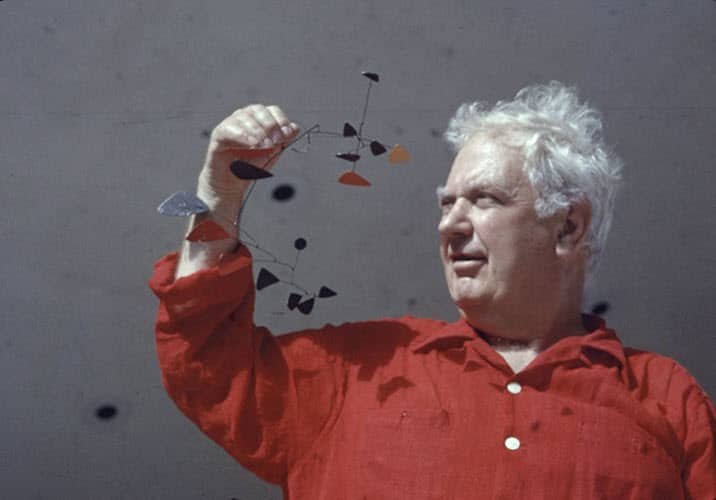Image Courtesy: Google Doodle
Alexander Calder (22 July 1898 – 11 November 1976) was a renowned American sculptor and artist known for his innovative and influential contributions to the field of modern art.
Life and Career
Alexander Calder was born on July 22, 1898, in Lawnton, Pennsylvania, USA. He came from a family of artists, as his father and grandfather were both sculptors. Calder studied mechanical engineering at the Stevens Institute of Technology but later decided to pursue a career in art.
In the 1920s, he moved to Paris, where he became associated with various artists and writers of the avant-garde, including Joan Miró, Fernand Léger, and Marcel Duchamp. Calder initially created wire sculptures that he called “drawings in space.” These early works laid the foundation for his signature style, which would later be known as “mobiles” and “stabiles.”
Calder is best known for his pioneering work in kinetic sculpture. He created “mobiles,” which were hanging sculptures that moved gracefully in response to air currents. These mobiles, often composed of abstract shapes and primary colors, brought a sense of movement and rhythm to static art forms.
In addition to his mobiles, Calder also created “stabiles,” which were large, stationary sculptures characterized by bold, abstract shapes. His stabiles can be seen in public spaces around the world, including the iconic “Flamingo” sculpture in Chicago’s Federal Plaza.
Alexander Calder continued to work and exhibit his art globally until his death. He passed away on November 11, 1976, in New York City, USA, leaving behind a rich legacy in the world of modern art.
Award and Legacy
Throughout his career, Calder received numerous awards and honors for his artistic achievements. In 1964, he was awarded the prestigious Presidential Medal of Freedom by President Lyndon B. Johnson. He was also the recipient of the main sculpture prize at the Venice Biennale in 1952.
Alexander Calder’s artistic legacy is significant, and he is widely regarded as one of the most influential sculptors of the 20th century. His innovative use of movement in sculpture and his exploration of abstract forms paved the way for future generations of artists. His mobiles and stabiles continue to captivate audiences and are featured in major museums and public spaces worldwide.
Calder’s work also played a crucial role in shaping the development of modern art, contributing to the evolution of abstract art and the redefinition of sculpture as an art form that extends beyond traditional static representations. His impact on the art world continues to be celebrated, studied, and emulated by artists and art enthusiasts alike.
On 22 July 2011, Google celebrated Alexander Calder’s 113th Birthday with a doodle.

